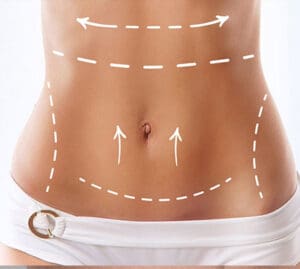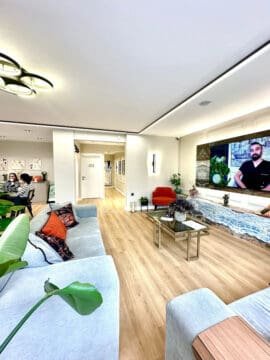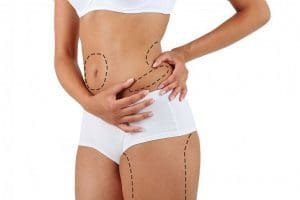Features of the Recovery period after Abdominoplasty
Abdominoplasty, or tummy tuck, is a major surgical procedure that requires a thorough approach to recovery. Many patients who decide to undergo this procedure ask themselves, “How will my recovery go?” In this article, we will examine all aspects of this important period, relying on the latest scientific data and the experience of leading specialists.
When is abdominoplasty recommended?

Before delving into the intricacies of rehabilitation, it is important to understand in which cases abdominoplasty is really necessary. Dr. Maria Lopez, a leading plastic surgeon, notes: “Abdominoplasty is not a universal solution. We recommend it only for certain indications”:
- Significant weight loss: After losing 30-40 kg, there is often excess skin that cannot be corrected with exercise.
- Postpartum changes: Many women experience diastasis recti and excess skin after pregnancy.
- Genetic predisposition: Some people are unable to get rid of the “beer belly” due to the peculiarities of fat distribution, despite dieting and exercise.
It is important to understand that abdominoplasty is not a weight loss method. If you are simply overweight, your doctor will recommend diet and exercise. In addition, there are contraindications, such as serious chronic diseases, blood clotting problems, pregnancy or plans to become pregnant in the near future.
Methods of treatment after abdominoplasty
After the surgery, the most important stage begins – the recovery period. This set of measures is aimed at the fastest possible return of the body to normal functioning and achieving the maximum aesthetic result.
- Drug therapy:
Painkillers.
Antibiotics to prevent infections.
Anti-inflammatory drugs. - Physiotherapy:
Lymphatic drainage massage, which usually begins 2-3 weeks after surgery.
Hardware procedures that stimulate blood circulation. - Compression underwear: It plays a key role in supporting tissues and reducing swelling. Research shows that properly selected compression underwear can speed up the recovery process by 20-30%.
The latest research published in the Journal of Plastic and Reconstructive Surgery emphasizes the importance of early mobilization. Patients who began walking in the first 24 hours after surgery noted less discomfort and faster recovery.
Consultation with a doctor: side effects
An ongoing dialogue with your doctor is key to successful rehabilitation. Dr. Alex Chen, a rehabilitation specialist, emphasizes: “Don’t be shy about asking questions. It’s better to ask more than to miss an important step.”
Possible side effects include:
- Pain and discomfort: Severe pain usually subsides within the first week.
- Swelling and bruising: These can last up to a month, gradually decreasing.
- Numbness in the abdominal area: This is temporary due to the nerves repairing themselves.
- Seroma: A collection of fluid under the skin that sometimes requires drainage.
- Stretching or separation of stitches: This is rare with proper care.
- Asymmetry: Sometimes the result of the surgery may not be perfectly symmetrical, but this usually corrects itself over time or with a second procedure.
Most of these effects are temporary, and if you are concerned, contact your doctor immediately.
What happens during the recovery period after abdominoplasty?
After the completion of abdominoplasty, an equally important stage begins – rehabilitation. This period requires not only physical but also psychological attention, since the recovery of the body is a complex and gradual process. It is important to understand that rehabilitation is not just a time of rest, but a period of active participation in your own recovery, following the doctor’s recommendations and adapting to new sensations. Let’s consider how this stage goes and what you should pay attention to.
Recovery period and its duration
Recovery after abdominoplasty is a marathon, not a sprint. Full recovery takes from 3 to 6 months. Let’s look at the main stages:
- The first 1-2 weeks: The most difficult period. Patients experience pain, discomfort, and limited mobility. It is important to rest a lot and strictly follow the doctor’s instructions.
- 2-3 weeks: The pain decreases, movement becomes freer. Many return to work, if it is not associated with physical activity.
- 4-6 weeks: Swelling significantly decreases, and the results of the surgery begin to appear.
- After 6 weeks: Gradually return to normal physical activity.
Relief of pain and reduction of discomfort
Pain is a natural part of recovery, but there are ways to cope with it:
- Use pillows to find a comfortable position for rest.
- Apply cold compresses, but only with the permission of the doctor.
- Wear compression underwear for tissue support.
Dr. Emily Brown, an anesthesiologist, advises: “Don’t tolerate pain. Timely pain relief helps the body recover faster.”
Wound and Scar Care
Proper care of your incisions is the key to minimal scarring and a good result. Dr. Michael Green, a specialist in post-surgical wound care, recommends:
- Clean the incision area with a mild antibacterial soap.
- Use creams and gels to reduce scarring after healing.
- Protect scars from UV rays to prevent them from becoming more noticeable.
- Only start massaging the scars after your doctor’s permission.
It can take up to a year for the scar to develop its final appearance, so patience and following your doctor’s recommendations are essential.
Swelling and its relief
Swelling is an inevitable companion of any serious surgery. To reduce it, it is recommended to:
- Wear compression underwear.
- Maintain moderate physical activity.
- Monitor your diet: limit salt and increase fluid intake.
- Take a course of lymphatic drainage massage as prescribed by a doctor.
Studies show that a combination of these methods can reduce the time it takes for swelling to subside by 30-40%.
Returning to normal positions and activities
A gradual return to normal activity usually follows this pattern:
- Week 1: Lots of rest, short walks around the house.
- Weeks 2-3: Return to light work, increasing the length of walks.
- Weeks 4-6: More vigorous movement is allowed, but no heavy lifting.
- After 6 weeks: Gradually return to normal physical activity.
Dr. Sarah Johnson, PT, stresses, “Don’t rush. Everyone heals at their own pace. Listen to your body.”
Sensitivity and sensations in the abdominal area
After abdominoplasty, many patients notice changes in the sensitivity of the skin of the abdomen. This is due to the effect on the nerve endings during the surgery. Important to know:
- Numbness can last from several weeks to several months.
- Sensitivity is restored gradually.
- In rare cases, small areas of skin may remain less sensitive for a long time.
- Sleep and body position
Proper sleep organization is essential for recovery. Dr. Lisa Taylor, a sleep specialist, recommends:
- Sleep on your back with the head of the bed elevated.
- Put a pillow under your knees.
- Use soft pillows on the sides of the body.
- Avoid sleeping on your side or stomach for the first few weeks.
- Get out of bed carefully, supporting your stomach with your hands.
- Nutrition and diet during recovery
Proper nutrition after abdominoplasty is an important part of the recovery process. Dr. Robert Kim, a nutritionist, recommends:
- Drink plenty of water to remove anesthesia products and prevent constipation.
- Eat protein-rich foods (lean meat, fish, eggs, legumes) to speed up healing.
- Include fruits and vegetables rich in vitamins and antioxidants in your diet.
- Limit salty, fatty foods and sugar.
- Temporarily eliminate alcohol.
“Proper nutrition can speed up the recovery process by 15-20%,” says Dr. Kim.
Compression underwear and a bandage
Compression underwear and a bandage play an important role in the rehabilitation process after abdominoplasty. During the first 3-4 weeks after surgery, compression underwear is recommended to be worn constantly, without removing it even at night. In the next 3-4 weeks, it can be worn only during the day. After two months of using compression underwear, it should be worn only during physical activity for another month.
As for the bandage, it is usually worn constantly for the first 1-2 weeks after surgery, providing maximum fixation and tissue support. In the following 2-3 weeks, the bandage is worn only during the day, and at night you can switch to using compression underwear. After 4-5 weeks of rehabilitation, patients usually switch completely to compression underwear, refusing to use the bandage.
Dr. Anna Lee, a rehabilitation specialist, emphasizes: “Correctly selected compression underwear is 50% of the success in the fight against edema and the formation of a new body contour.”
Cost
The cost of abdominoplasty and subsequent recovery can vary significantly depending on the region, the skill of the surgeon and the scope of the procedure. On average, the total cost can range from $5,000 to $15,000. It is important to consider not only the cost of the surgery itself, but also the costs of:
- Preoperative examinations.
- Anesthesia.
- Postoperative care.
- Compression garments.
- Medications.
- Possible corrective procedures.
Dr. James Wilson, a health insurance expert, advises: “Always clarify what exactly is included in the cost of the procedure. Some clinics offer package solutions that include postoperative care, which can be more cost-effective.”
Results and Effectiveness of Abdominoplasty

Abdominoplasty can produce dramatic results, but it is important to have realistic expectations. Dr. Olivia Smith, a plastic surgeon with 20 years of experience, notes: “Abdominoplasty can significantly improve body contour, remove excess skin and fat, but it is not a substitute for a healthy lifestyle.”
The effectiveness of the procedure depends on several factors:
- The initial condition of the patient.
- The qualifications of the surgeon.
- Compliance with recommendations during the recovery period.
- Maintaining a stable weight after surgery.
According to a study published in the Plastic and Reconstructive Surgery Journal, 95% of patients report high satisfaction with the results one year after surgery.
What should you absolutely not do during your recovery?
It is vital to avoid certain activities to ensure a successful recovery. Dr. David Brown, a rehabilitation specialist, warns:
- Do not lift heavy objects (more than 5-6 pounds) for the first 6 weeks after surgery.
- Avoid strenuous physical activity until your doctor says it is okay.
- Do not take hot baths or visit a sauna for the first 4-6 weeks.
- Do not sunbathe or use a tanning bed until your scars have completely healed.
- Do not smoke for at least 4 weeks after surgery, as this will slow down healing.
- Do not wear tight clothing, except for recommended compression garments.
“Following these guidelines can significantly reduce the risk of complications and improve your final outcome,” Dr. Brown emphasizes.
Psychological aspects of recovery
Recovery after abdominoplasty is not only a physical but also a psychological process.
Dr. Elena Volkova, a clinical psychologist, notes: “Many patients experience mixed feelings after surgery. This is normal and is part of the process of adapting to a new body.”
Here are some tips for maintaining psychological health:
- Be patient: the results will not be immediate.
- Discuss your feelings with loved ones or a specialist.
- Focus on progress, not on temporary inconveniences.
- Keep a recovery diary, noting small victories.
“A positive attitude and realistic expectations are the key to satisfaction with the results of the surgery,” adds Dr. Volkova.
Conclusion
Recovery after abdominoplasty is a complex process that requires patience, attention to your body, and close cooperation with your doctor. By following the advice of experts and listening to your feelings, you can achieve the best results and enjoy your renewed appearance.
Remember that every body is unique, and your recovery path may differ from what is described here. Do not hesitate to contact your surgeon with any questions or concerns – your health and comfort are the top priority.
Dr. Michael Green, a leading plastic surgeon, sums it up: “Abdominoplasty can be a transformative procedure, but success depends greatly on proper recovery. Be patient, follow the recommendations, and the result will exceed your expectations.”






